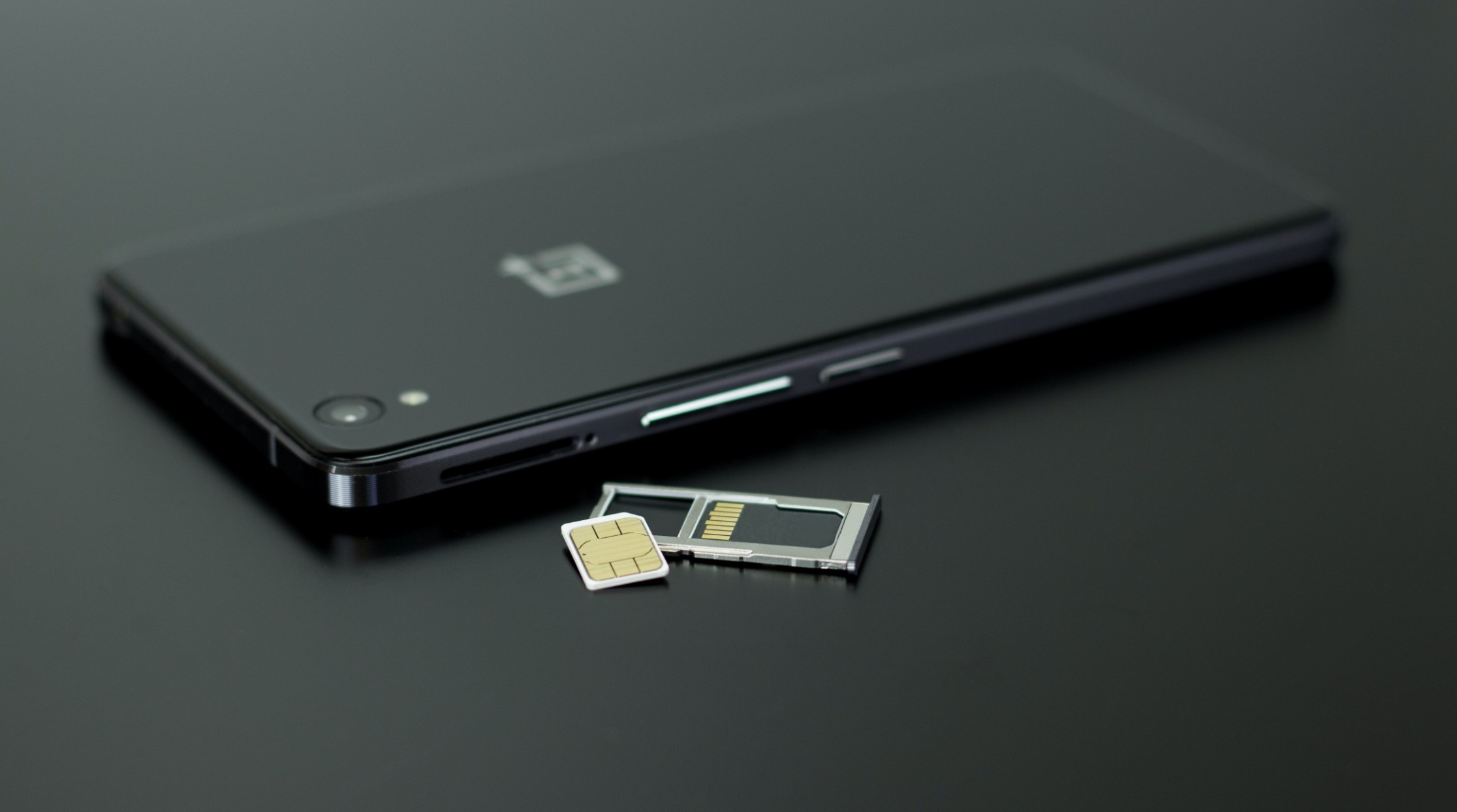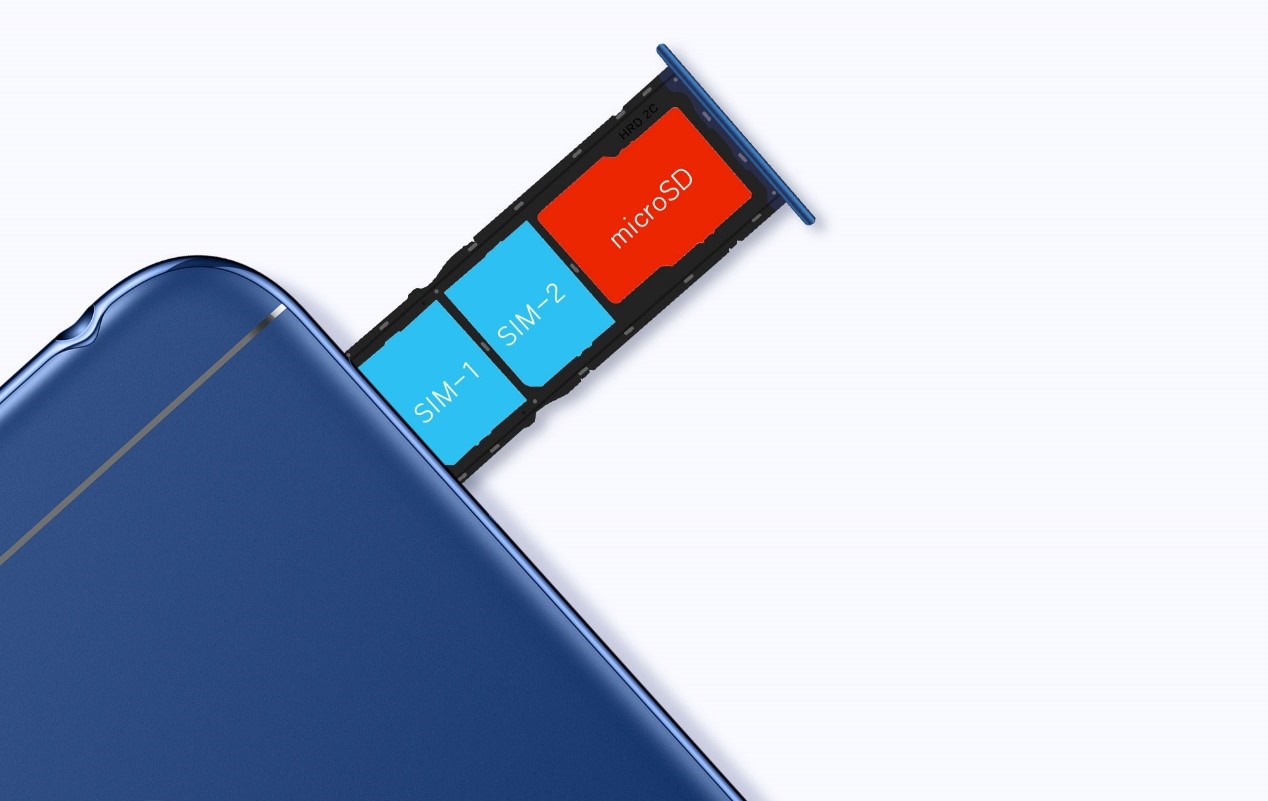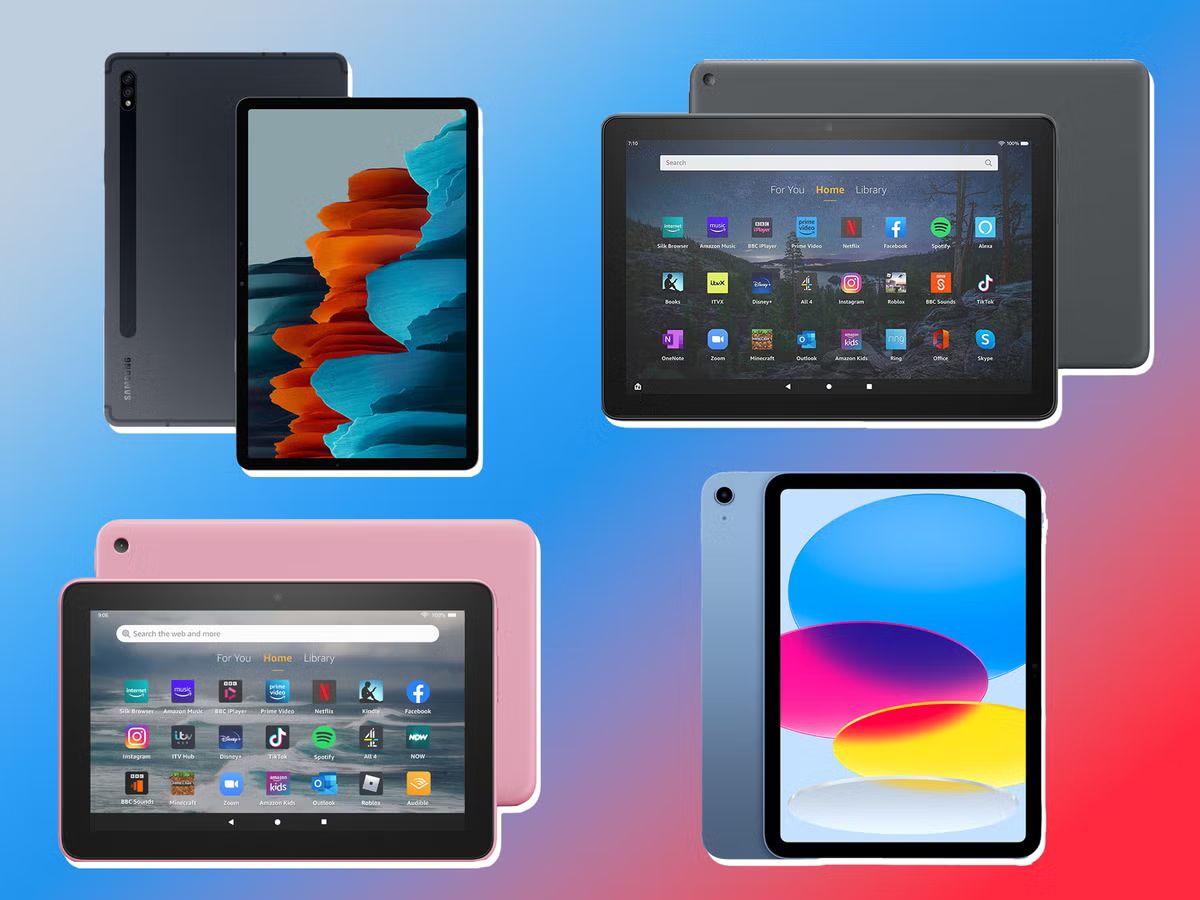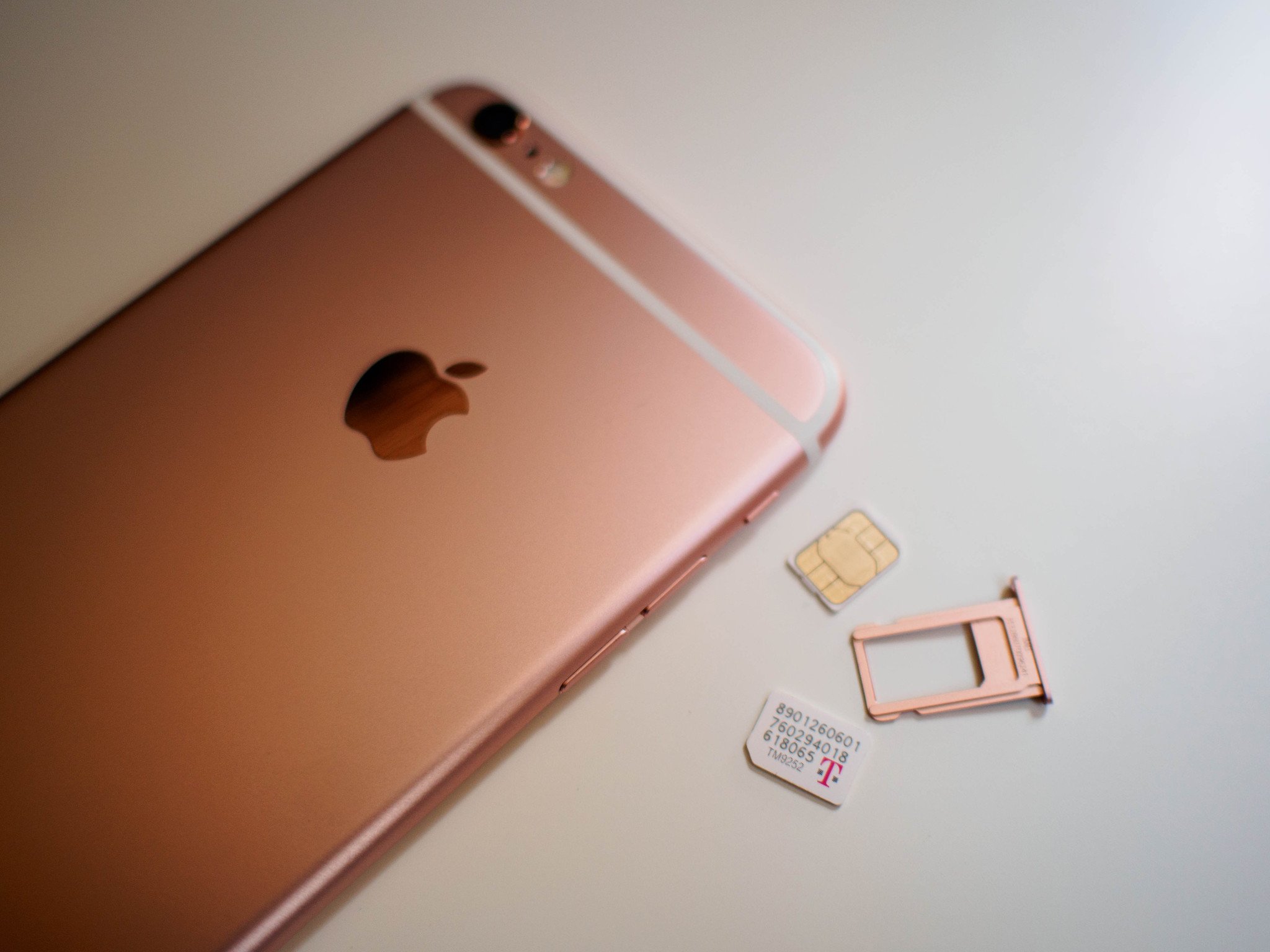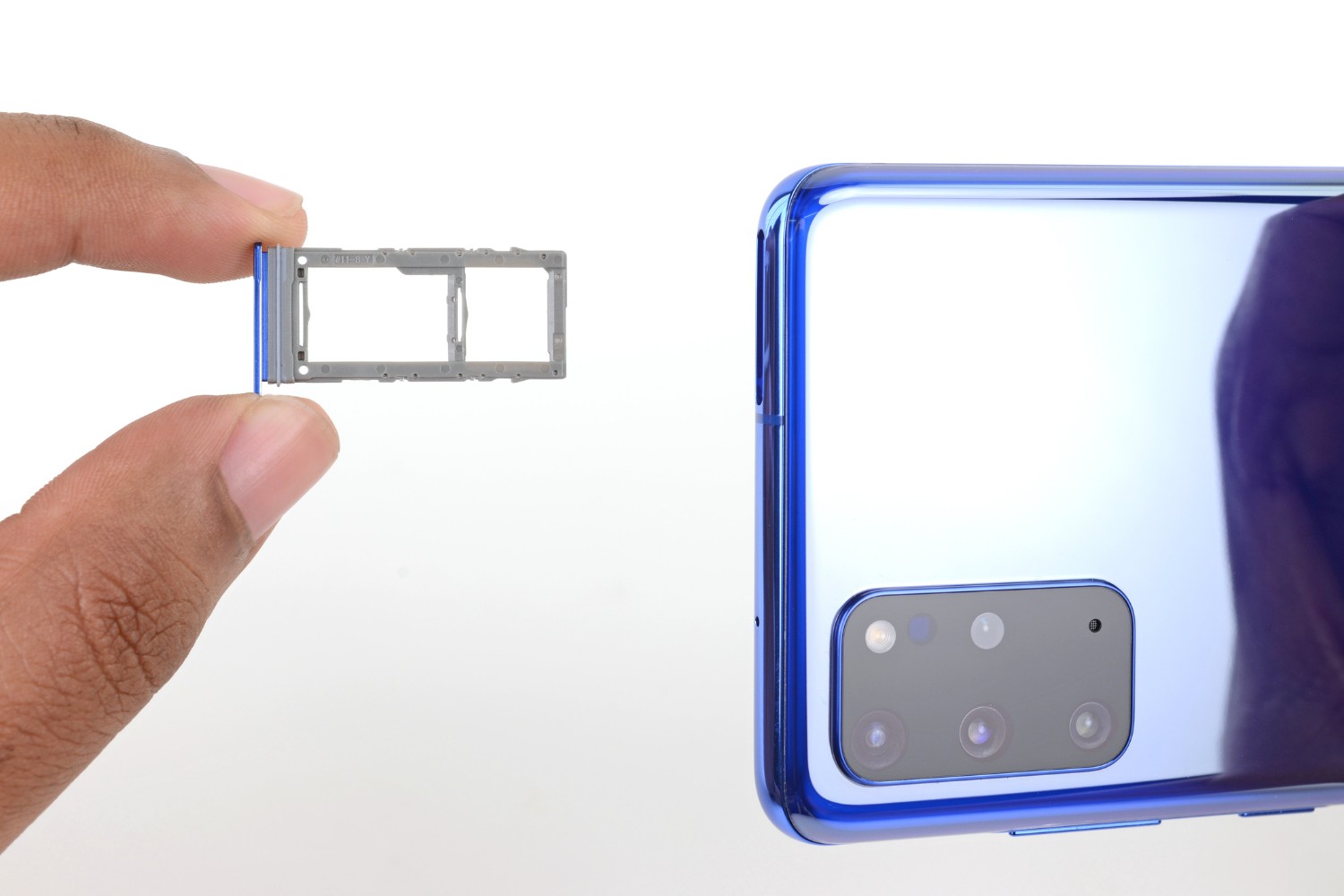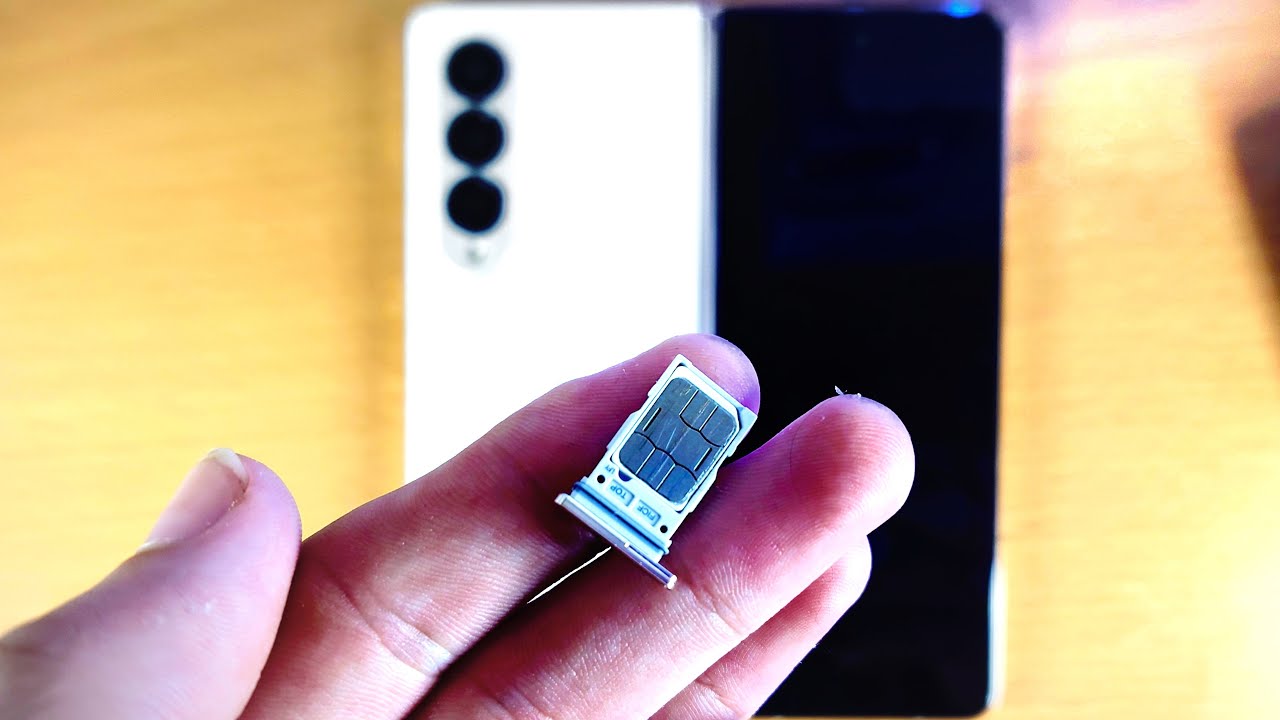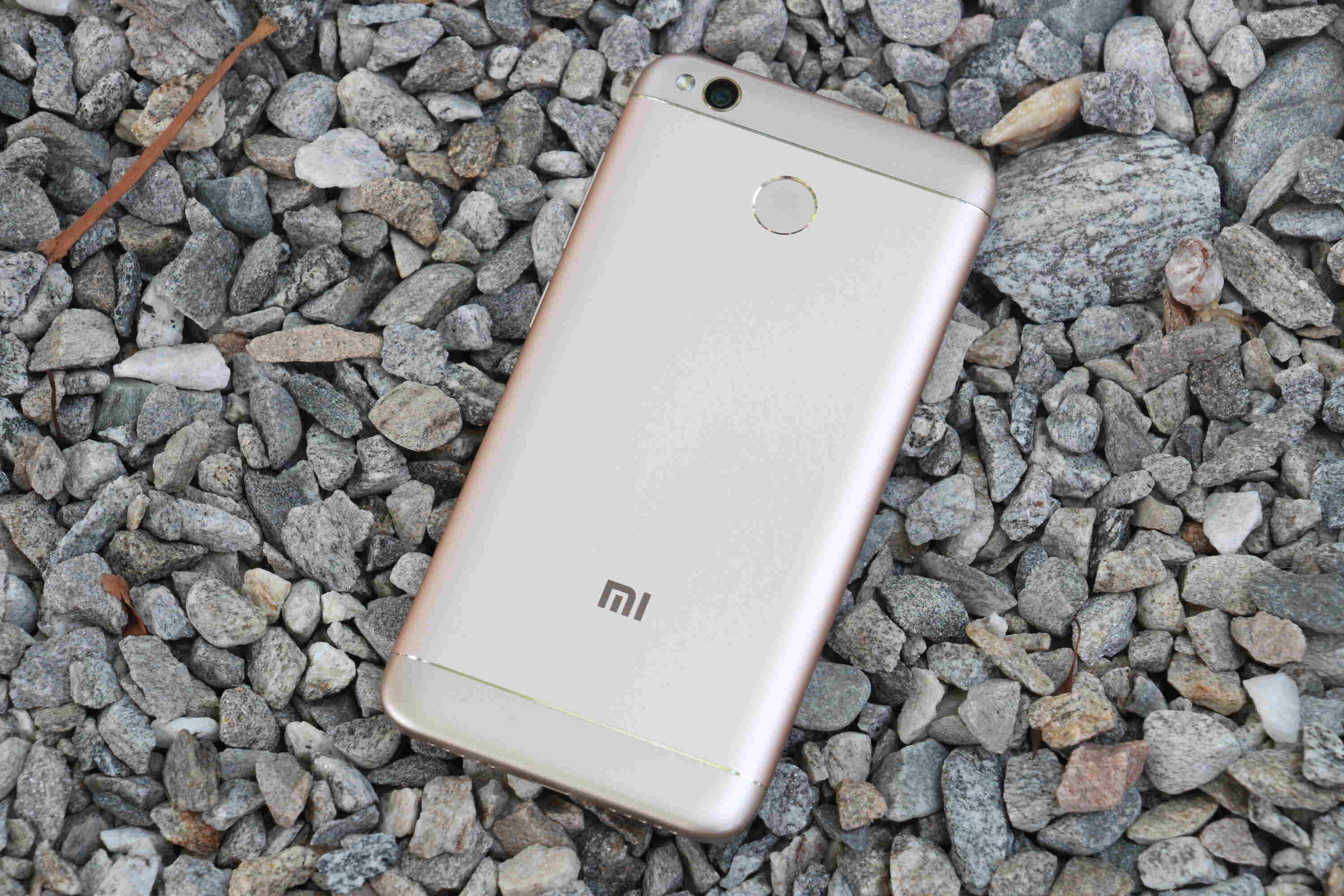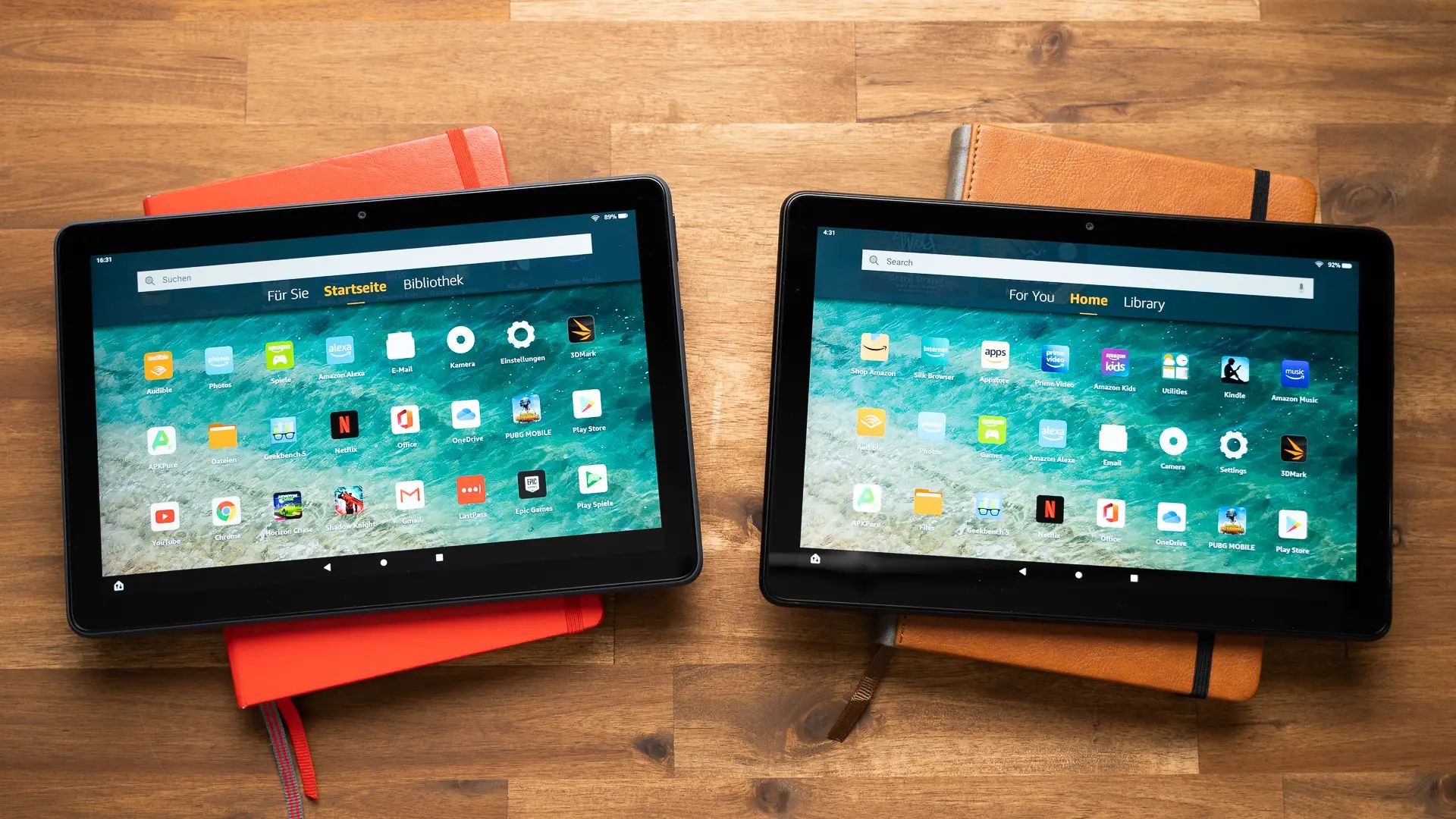Introduction
In today's fast-paced and interconnected world, mobile devices have become an indispensable part of our daily lives. These devices have evolved to offer a wide array of features, including the ability to support multiple SIM cards. The introduction of dual SIM cards has revolutionized the way we use our smartphones and has opened up a world of possibilities for users seeking enhanced flexibility and convenience.
Dual SIM cards have garnered immense popularity due to their ability to accommodate two SIM cards within a single device. This innovative technology has empowered users to seamlessly manage personal and professional contacts, access different mobile networks, and enjoy cost-effective communication solutions. The versatility and practicality offered by dual SIM cards have made them a sought-after feature in the realm of mobile devices.
As we delve deeper into the realm of dual SIM cards, it becomes evident that these small yet powerful components have the potential to streamline our communication experiences and provide a level of adaptability that was previously unattainable. By understanding the purpose, advantages, and potential drawbacks of dual SIM cards, users can make informed decisions about integrating this technology into their mobile lifestyles. Let's embark on a journey to explore the multifaceted nature of dual SIM cards and uncover the myriad ways in which they can enhance our mobile communication experiences.
What is a Dual SIM Card?
A dual SIM card is a small electronic chip that enables a mobile device to support two separate SIM cards simultaneously. This innovative feature allows users to make and receive calls, send text messages, and access mobile data using two different phone numbers within a single device. Essentially, it eliminates the need to carry two separate phones for managing personal and professional contacts.
The implementation of dual SIM technology varies across devices. Some smartphones feature a dedicated slot for each SIM card, while others utilize a hybrid SIM tray that can accommodate either two SIM cards or one SIM card and a microSD card. This flexibility empowers users to customize their mobile communication setup based on their specific needs.
Furthermore, dual SIM cards can operate in different modes, such as Dual SIM Dual Standby (DSDS) and Dual SIM Dual Active (DSDA). In DSDS mode, both SIM cards are active and can receive calls and messages, but only one can be used for data at a time. On the other hand, DSDA mode allows both SIM cards to be used for calls, messages, and data simultaneously, providing enhanced flexibility and connectivity.
The versatility of dual SIM cards extends beyond managing personal and professional contacts. Users can leverage this feature to access different mobile networks, take advantage of diverse service plans, and avoid roaming charges when traveling internationally. Additionally, dual SIM functionality enables seamless switching between SIM cards for specific purposes, such as making international calls or accessing data from a secondary provider.
The integration of dual SIM cards into mobile devices has redefined the way users approach communication and connectivity. Whether it's juggling work and personal commitments, optimizing cost-effective mobile plans, or staying connected while traveling, dual SIM cards offer a practical and efficient solution for modern mobile communication needs.
Advantages of Using Dual SIM Cards
Dual SIM cards offer a myriad of advantages that cater to the diverse needs and preferences of mobile device users. By embracing the functionality of dual SIM technology, individuals can unlock a range of benefits that enhance their communication experiences and provide newfound flexibility. Let's delve into the compelling advantages of utilizing dual SIM cards:
-
Effortless Management of Personal and Professional Contacts: With dual SIM cards, users can seamlessly manage personal and professional contacts without the need for multiple devices. This streamlined approach simplifies communication and ensures that individuals can stay connected in various aspects of their lives without the inconvenience of carrying multiple phones.
-
Enhanced Connectivity and Accessibility: Dual SIM cards enable users to access two different phone numbers within a single device, promoting enhanced connectivity and accessibility. Whether it's maintaining a personal number and a work number or utilizing local and international SIM cards, this feature empowers users to stay connected across diverse networks and regions.
-
Optimized Cost-Effectiveness: By leveraging dual SIM cards, individuals can take advantage of cost-effective mobile plans and promotions offered by different service providers. This flexibility allows users to optimize their communication expenses by selecting the most suitable plans for voice calls, text messages, and mobile data based on their specific usage patterns and preferences.
-
Seamless Roaming and Travel Convenience: When traveling internationally, dual SIM cards offer the convenience of seamlessly switching between local and international SIM cards to avoid exorbitant roaming charges. This empowers travelers to stay connected with their home network while benefiting from local mobile services, ensuring uninterrupted communication and data access during their journeys.
-
Balancing Work and Personal Life: Dual SIM cards provide a practical solution for individuals seeking to balance their work and personal lives. By assigning specific SIM cards for work-related communications and personal interactions, users can establish clear boundaries and manage their time effectively without compromising on connectivity.
-
Diverse Network Access and Redundancy: With dual SIM functionality, users can access multiple mobile networks, enhancing reliability and ensuring connectivity even in areas with varying network coverage. This redundancy can be particularly beneficial in remote or rural locations, where having access to multiple networks can mitigate the impact of network outages or signal limitations.
-
Flexibility for Specific Communication Needs: Whether it's making international calls, accessing data from a secondary provider, or utilizing different service plans for specific purposes, dual SIM cards offer the flexibility to cater to diverse communication needs without the constraints of a single SIM setup.
In essence, the advantages of using dual SIM cards extend far beyond the convenience of managing multiple phone numbers. This innovative feature empowers users to tailor their communication experiences to align with their individual preferences, optimize cost-effectiveness, and stay connected across various networks and regions. By embracing the versatility of dual SIM technology, individuals can elevate their mobile communication capabilities and embrace a newfound level of adaptability in their daily lives.
Disadvantages of Using Dual SIM Cards
While dual SIM cards offer a multitude of benefits, it's essential to acknowledge the potential drawbacks associated with this technology. Understanding the limitations of dual SIM cards can provide users with a comprehensive perspective, allowing them to make informed decisions based on their specific needs and preferences. Let's explore the notable disadvantages of utilizing dual SIM cards:
-
Battery Consumption: The simultaneous operation of two SIM cards can lead to increased battery consumption, especially in devices that do not optimize power management for dual SIM functionality. This can result in more frequent recharging and reduced overall battery life, impacting the device's usability and convenience.
-
Limited Space for Additional Features: In devices with a hybrid SIM tray, the incorporation of two SIM cards may restrict the availability of an additional microSD card slot. As a result, users may face limitations in expanding storage capacity, especially in devices with fixed internal storage.
-
Complex Call and Data Management: Juggling between two active SIM cards for calls, messages, and data usage can introduce complexity in managing communication preferences and network settings. Users may find it challenging to navigate through settings and ensure seamless connectivity, especially when configuring preferences for specific usage scenarios.
-
Potential Signal Interference: In certain scenarios, the simultaneous operation of two SIM cards within a single device may lead to signal interference or reduced network performance. This can impact call quality, data transfer speeds, and overall connectivity, particularly in areas with weak network coverage.
-
Compatibility and Network Restrictions: Some mobile networks and service providers may impose restrictions on the compatibility of dual SIM devices, limiting the availability of certain features or services. Additionally, not all devices support the same dual SIM functionality, and users may encounter compatibility issues when utilizing dual SIM cards across different regions or networks.
-
Increased Device Complexity: The integration of dual SIM technology introduces an additional layer of complexity to the device's functionality and settings. Users may need to familiarize themselves with specific dual SIM configurations, call routing options, and network prioritization, which can be overwhelming for individuals seeking a straightforward mobile experience.
-
Potential Software Limitations: Certain mobile applications and features may not be optimized for dual SIM usage, leading to potential software limitations or compatibility issues. This can impact the seamless integration of certain apps with dual SIM functionality, potentially affecting the user experience and convenience.
By acknowledging these potential disadvantages, users can approach the adoption of dual SIM cards with a balanced perspective, weighing the benefits against the limitations to determine the suitability of this technology for their individual needs. While the drawbacks of using dual SIM cards are noteworthy, they can be mitigated through careful consideration and informed decision-making, allowing users to harness the advantages of dual SIM technology while addressing potential challenges effectively.
Common Uses of Dual SIM Cards
Dual SIM cards cater to a diverse array of usage scenarios, offering users unparalleled flexibility and convenience in managing their communication needs. By integrating dual SIM technology into their mobile devices, individuals can explore a multitude of practical and innovative uses that enhance their connectivity, cost-effectiveness, and overall communication experiences.
-
Business and Personal Segregation: Dual SIM cards are widely utilized by professionals who seek to maintain a clear distinction between their business and personal communications. By assigning one SIM card for work-related contacts and another for personal connections, individuals can establish boundaries and manage their time effectively without compromising on connectivity. This segregation ensures that important business calls and messages are readily accessible while preserving personal communication channels.
-
International Travel and Roaming: When embarking on international travel, dual SIM cards offer unparalleled convenience for staying connected across different regions. Travelers can seamlessly switch between local and international SIM cards, avoiding exorbitant roaming charges and ensuring uninterrupted communication and data access during their journeys. This flexibility empowers individuals to leverage local mobile services while retaining connectivity with their home network, facilitating hassle-free international communication.
-
Optimizing Cost-Effective Plans: Dual SIM cards enable users to capitalize on cost-effective mobile plans and promotions offered by different service providers. By selecting the most suitable plans for voice calls, text messages, and mobile data based on their specific usage patterns and preferences, individuals can optimize their communication expenses and enjoy enhanced cost-effectiveness. This versatility allows users to tailor their mobile plans to align with their communication needs and budgetary considerations.
-
Network Redundancy and Reliability: In areas with varying network coverage, dual SIM cards provide a valuable redundancy feature, ensuring connectivity even in regions with limited network access. By accessing multiple mobile networks, users can mitigate the impact of network outages or signal limitations, enhancing reliability and ensuring uninterrupted communication. This redundancy is particularly beneficial in remote or rural locations where consistent network coverage may be challenging to attain.
-
Balancing Multiple Roles: Individuals with diverse roles and responsibilities, such as freelancers, entrepreneurs, or caregivers, can benefit from the versatility of dual SIM cards. By managing distinct phone numbers for different roles, users can effectively balance their various commitments without the need for multiple devices. This approach streamlines communication and ensures that individuals can seamlessly transition between their different roles without compromising on connectivity.
-
Exploring Different Service Providers: Dual SIM cards empower users to explore and benefit from the offerings of multiple service providers. Whether it's accessing specialized data plans, leveraging unique promotional offers, or capitalizing on network-specific advantages, individuals can diversify their mobile experiences by utilizing different SIM cards. This flexibility allows users to adapt their communication setup based on their evolving needs and preferences.
In essence, the common uses of dual SIM cards underscore the remarkable versatility and adaptability of this technology. From segregating business and personal communications to optimizing cost-effective plans and embracing network redundancy, dual SIM cards empower users to navigate diverse communication scenarios with ease and efficiency. By leveraging the multifaceted capabilities of dual SIM technology, individuals can elevate their mobile communication experiences and embrace a newfound level of control and convenience in managing their connectivity.
Conclusion
In conclusion, the advent of dual SIM cards has reshaped the landscape of mobile communication, offering users a versatile and practical solution for managing multiple phone numbers and optimizing connectivity. The integration of dual SIM technology into mobile devices has empowered individuals to seamlessly navigate diverse communication scenarios, whether it involves balancing work and personal commitments, staying connected while traveling, or capitalizing on cost-effective mobile plans.
By embracing the advantages of dual SIM cards, users can effortlessly manage personal and professional contacts, access diverse mobile networks, and optimize their communication expenses. The inherent flexibility of dual SIM technology enables individuals to tailor their communication setup to align with their unique needs and preferences, fostering a newfound level of adaptability and convenience in their daily lives.
While the potential drawbacks of using dual SIM cards are noteworthy, they can be effectively addressed through informed decision-making and strategic usage. By acknowledging the limitations and understanding the trade-offs, users can harness the benefits of dual SIM technology while mitigating potential challenges, ensuring a seamless and rewarding communication experience.
Moreover, the common uses of dual SIM cards underscore the remarkable versatility of this technology, catering to a diverse array of scenarios such as business and personal segregation, international travel, cost-effective plan optimization, network redundancy, and balancing multiple roles. This multifaceted functionality positions dual SIM cards as a valuable asset for individuals seeking enhanced control and efficiency in managing their connectivity.
As mobile devices continue to evolve and adapt to the dynamic needs of users, the prominence of dual SIM cards is poised to endure, offering a practical and innovative solution for streamlining communication experiences. Whether it's enhancing productivity, facilitating seamless travel, or optimizing cost-effectiveness, dual SIM cards have emerged as a fundamental feature that empowers users to navigate the complexities of modern communication with unparalleled ease.
In essence, the purpose of dual SIM cards extends beyond the convenience of managing multiple phone numbers; it encapsulates the essence of adaptability, connectivity, and personalized communication experiences. As users embrace the capabilities of dual SIM technology, they embark on a journey towards a more streamlined, cost-effective, and versatile approach to mobile communication, redefining the way they stay connected and engaged in an interconnected world.







